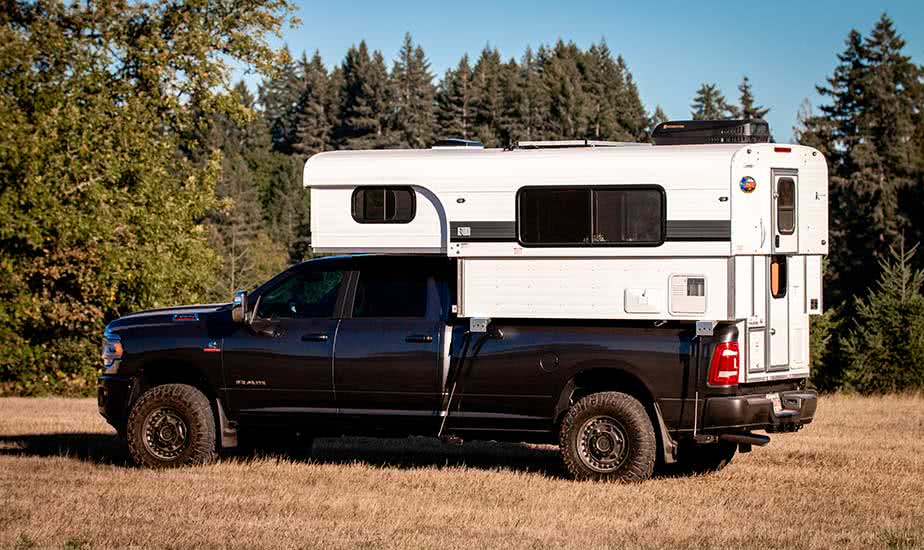“I'm starting to think the Alaskan might be the best of both worlds for me. The low profile is good for 'off road', such as I would drive; and while it pops up, it has hard sides, not fabric. A good condition 8 footer would be something I should consider.”
If this is going to be your selection, you’ll want to start shopping for one ASAP. Generally, these have been very hard to find on the FSBO market.
I may be able to fabricate some type of stowable/folding enclosure as a shower over the toilet, and plumb (it)... I believe the concept has merit.. a folding, solid wall shower enclosure.
With respect, this and the folding cabinets idea seem to indicate you might be over thinking your camper mods a bit. Something like a small portable, external pop up shower tent would work fine. Heat a coffee pot of water, mix it in with some cold water in a (collapsing) silicone bowl and use that set up to bathe inside the tent. There should be ponds and small lakes/streams to use as places to wash up too (or find a flow of glacier melt running through a culvert).
The folding cabinets are a pretty interesting design idea. But having to set them up every night sounds like they might be more trouble than worth. It might work better just to use some duffel bags or plastic, lidded bins to store extra gear, tossing them up on to the overhead bunk to get them out of your living space once you’re in camp for the night.
AG;
My second career is in manufacturing using manual and multi axis CNC machines. Designing and re-designing is 2nd nature; "continuous improvement", in manufacturing lingo.
The folding cabinets would simply swing 90 degrees along the length of the piano (or similar hinge). The only work would be unlatching from the storage position and latching into the camp position.
Of course, this 90 degree rotation flops everything in the cabinet around. A modified type of hood scissor hinge might allow the "swinging cabinet" to stow right side up, adjacent with and on the same horizontal plane as the factory cabinets. The hinge would connect to both ends of the swinging cabinet, and both ends of the fixed cabinet. Sorta:
Then again, good old heavy duty duffle bags on the floor when camper stowed would carry more than any swinging cabinet.
-------------------------------------------------------------
Nimbl's bath enclosure is what I was thinking of, except they use a shower curtain for the upper enclosure. I believe Northstar's Laredo 850 has a similar setup for their shower.
Building a walled shower setup is possible. But after thinking about it I realize it adds unnecessary weight and complexity.
--------------------------------------------------
Truck Camper Magazine reviewed Alaskan's 8.5 FD model. The review noted almost all the room in the cabinets underneath sink and stove were taken up with various mechanicals. This didn't leave much storage space. Since this TC may be home for months, if not longer, storage space has to be carefully considered.
There's a guy in my neighbor hood with a 1960's Dodge Power Giant power wagon and non-cab 8' Alaskan camper. Truck is faded red, just the right patina, but it runs down the road quietly and smoothly. I'll have to ask for a tour of the camper.







